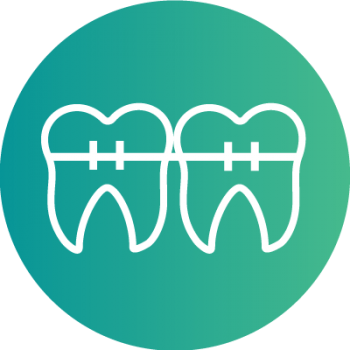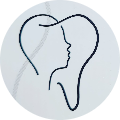
Orthodontics removable (braces)
What is orthodontics (removable)?
The field of orthodontics is a specialty in the realm of dental medicine which deals with removable and permanent braces and other kinds of devices intended to correct dental misalignments in children, adolescents, and adults. In the past few years, orthodontic treatments have gained in popularity because an...
Read More All dentists with available appointment times are listed here. Super easy booking with just one click!
Featured Dentist
Kasra Saremi-Rad
Dr. Med. Dent.
Insurances: All Insurances
Address:
Langegasse 65
1080 Vienna
Featured for
- Implantology
- Periodontology
- General Dentistry
Featured for
-
Implantology
-
Periodontology
- General Dentistry
At the moment no entries are available
Back to top
To sum up, the main tasks of orthodontics are:
Orthodontic procedures can also significantly improve the appearance of an adult's smile which is becoming increasingly important on the job nowadays. Therefore, an increasing number of adults is showing interest in so-called invisible braces to fix any lasting dental misalignments that they may not have addressed while they were still growing up.
Should metal elements of a retainer become bent out of shape or dislocated, a patient needs to go see an orthodontist for repairs right away instead of trying to fix the issue him- or herself to avoid doing more harm than good.
We hope that you found this primer helpful and propose to you to take a look at our blog as well as at the following landing pages for more information:
All the Best & see you soon, Ace!
Back to top
What is orthodontics (removable)?
The field of orthodontics is a specialty in the realm of dental medicine which deals with removable and permanent braces and other kinds of devices intended to correct dental misalignments in children, adolescents, and adults. In the past few years, orthodontic treatments have gained in popularity because an increasing number of people are seeking to "fix" their smiles to not fall behind the aesthetic expectations of the time. Both in private and in professional life, a symmetric smile has become an absolute must. The repair of impediments to chewing and swallowing is also a key reason for orthodontic procedures because, in such cases, they can directly improve patients' lives. Such situations are more common among older patients and may lead to significant and lasting problems unless they are addressed in time. The combination of regular and thorough dental hygiene and targeted orthodontic procedures can significantly improve the functionality of a patient's jaws.To sum up, the main tasks of orthodontics are:
- Improved aesthetic of the denture
- Optimized function of the denture
- Correction of misalignments of teeth and jaws
When do I need an orthodontic treatment?
Nowadays, roughly 40% of all children and adolescents exhibit some form of dental misalignment, many of which end up not being diagnosed or addressed in time. Since the timely recognition and treatment of such misalignments is absolutely key to ensure optimal treatment outcomes, many dentists and orthodontists recommend to their patients to come in for orthodontic check-up visits on a regular basis. A sample schedule for such regular check-ups can look as follows:- For the first time at the age of 4
- At the age of 8
- At the age of 12 and then regularly thereafter
Orthodontic procedures can also significantly improve the appearance of an adult's smile which is becoming increasingly important on the job nowadays. Therefore, an increasing number of adults is showing interest in so-called invisible braces to fix any lasting dental misalignments that they may not have addressed while they were still growing up.
What are the orthodontic treatment options with removable braces?
In general, there are 3 types of removable retainers that may be used in clinical settings as well as special removable splints that are recommended for athletes (e.g., football players) who compete in contact sports and who aim to protect their teeth and jaws from damage.- Removable Retainers: This kind of retainer consists of two active pieces, which are placed on top of the upper and lower jaws to slowly and carefully correct dental misalignments. Both pieces are made of plastic into which metal elements are embedded (e.g., clips, screws) to provide more mobility for the person wearing them. In the course of several months, removable retainers can successfully correct misalignments of both milk (baby) and permanent teeth. The advantages of this kind of retainer are that it does not inhibit a patient's daily oral hygiene, that it is easy to clean, and that it only rarely overburdens the periodontium. Its disadvantages are its limited ability to correct dental misalignments compared to permanent braces, their reliance on the patient's adherence to the therapy plan (independent insertion every night) and an impaired ability to speak while the patient is wearing the retainers inside his or her mouth.
- Activators: This kind of retainer is a so-called dual retainer made out of plastic which treats both of a patient's jaws simultaneously. Contrary to a removable retainer, which has a snug fit inside a patient's mouth, activators fit much more loosely and do not have embedded metal elements. The desired corrections of dental and jaw misalignments are, thus, solely a result of the force exerted by the patient's mastication muscles. The advantages of activators are the same as those of removable retainers plus that they are easier to handle. Its drawbacks are, again, the same as those of removable retainers as well as the fact that they can't effectively target misalignments of individual teeth.
- Invisible Aligner Therapy: This option is particularly popular among adolescents and adults, given that aligners are basically transparent, custom-made splints that can be worn for up to 22 hours per day to slowly but certainly fix dental misalignments. They only need to be removed during meals and when brushing teeth. Aligners are custom-made based on patient-specific intra-oral scans and 3D planning software and need to be replaced regularly as the patient's teeth are slowly pushed into their intended places. Nowadays, the best known type of aligner is called invisalign.
- Sport Guard: Since many sports (e.g., ice hockey, soccer, rugby, etc.) do not only require significant physical effort but also contact with others, they can put the health of players' teeth in jeopardy. To alleviate this risk, many dentists recommend the use of so-called sport guards, which are removable splints that are similar to those prescribed to patients with bruxism.
How do I take care of my removable retainer?
Depending on their exact type, removable retainers can be worn only during the night or during both day- and nighttime. Since all kinds of removable retainers are fairly easy to insert and remove, patients can easily keep them clean by rinsing them with warm water and brushing their surface with a small brush to prevent the build-up of dental calculus.Should metal elements of a retainer become bent out of shape or dislocated, a patient needs to go see an orthodontist for repairs right away instead of trying to fix the issue him- or herself to avoid doing more harm than good.
We hope that you found this primer helpful and propose to you to take a look at our blog as well as at the following landing pages for more information:
All the Best & see you soon, Ace!
